sugar & spice resources






Sugar & Spice was a collaboration between Bounce Theatre and Meet & Make Spaces Tooting.
Together we delivered an intergenerational project celebrating the people, the places, and the spaces which helped shape the High Street as we know it today. Using oral histories & research groups are joining together to celebrate the stories of their local community.
Children animated heritage stories using shadow puppetry, drama, creative writing, collage and even tried a “trashion” show!
The project culminated with a performance, touring exhibition and poetry book co-created with local people between 7-70 in age.
This resource blends some of our heritage findings with resources used by the artists throughout the project. These were adapted for children and young people between 10-13 years old.
I am happy
I am rooted
I am cake
I am learning from mum
I am something amazing
I am Spice Village
I am Namak Mandi
I am grateful for my house
I am hopeful for having a great use
I am a child, a funny person, a dog lover and sweet as chocolate
I am Earlsfield
I am India
I am my parents who cook my food and recommend what to eat
I am cinnamon rolls
I am the memories of baking bread in Year 5
I am learning through Google
I am loads of curry and meat
I am noodles from Tooting on a Friday
I am grateful for the food on the table
Anon
I am sporty, I am friendly
I have roots in London, Africa, and Asia
I am lucky to have so much variety of food
I am influenced by my whole family, my mum, dad, grandma, grandpa, and great grandma
I am all the ways you savour fish and chips because they are so crunchy, soft, and warm
I am the memories of making cookies with my friend last year
I am expecting an Eid feast
I am fish and chips on Fridays
I am Tooting Market
I make friends easily; I help people a lot and I never give up.
I am grateful for the food I have the option for.
Fircroft Primary School
I am fantabulous
I am in love with Brazil, and I find flickers in Tooting
I am Brazil and Italy
I am the influences of my mum
I am every food, I can’t choose
I am the memories of baking coconut cake
I am the teachings of my family
I am fish at Easter
I am anything
I am grateful for my food and family
I am hopeful for the Ukrainian war to end.
Edda
I am a pink, warm snoodie cuddled up in my bed, with a warm woolly hood on top of my head.
I am a busy high street abuzz with Primark shoppers and fruit stalls.
I am a brand new dress that flies when I twirl
I am as noisy as a sunny day in Tooting
I have lived in London
I am my own influencer
I love my white jumper dress it makes me feel like I fit in.
I like wearing jeans or leggings with dresses to restaurants
I buy from Sainsburys, next and Primark
I am funny, kind and unlucky
I am grateful for my kittens
I am hopeful I can get extensions for my hair.
Khaleela
I am in pain because of my knee
I am living in Tooting which is my life key
I am Indonesia, Burma, Asia, and London
I am my mum’s food
I am pizza in the box, with tabasco sauce on the side
I am learning from my mum who is so good at cooking
I am the big meals at Grandma’s with loads of people
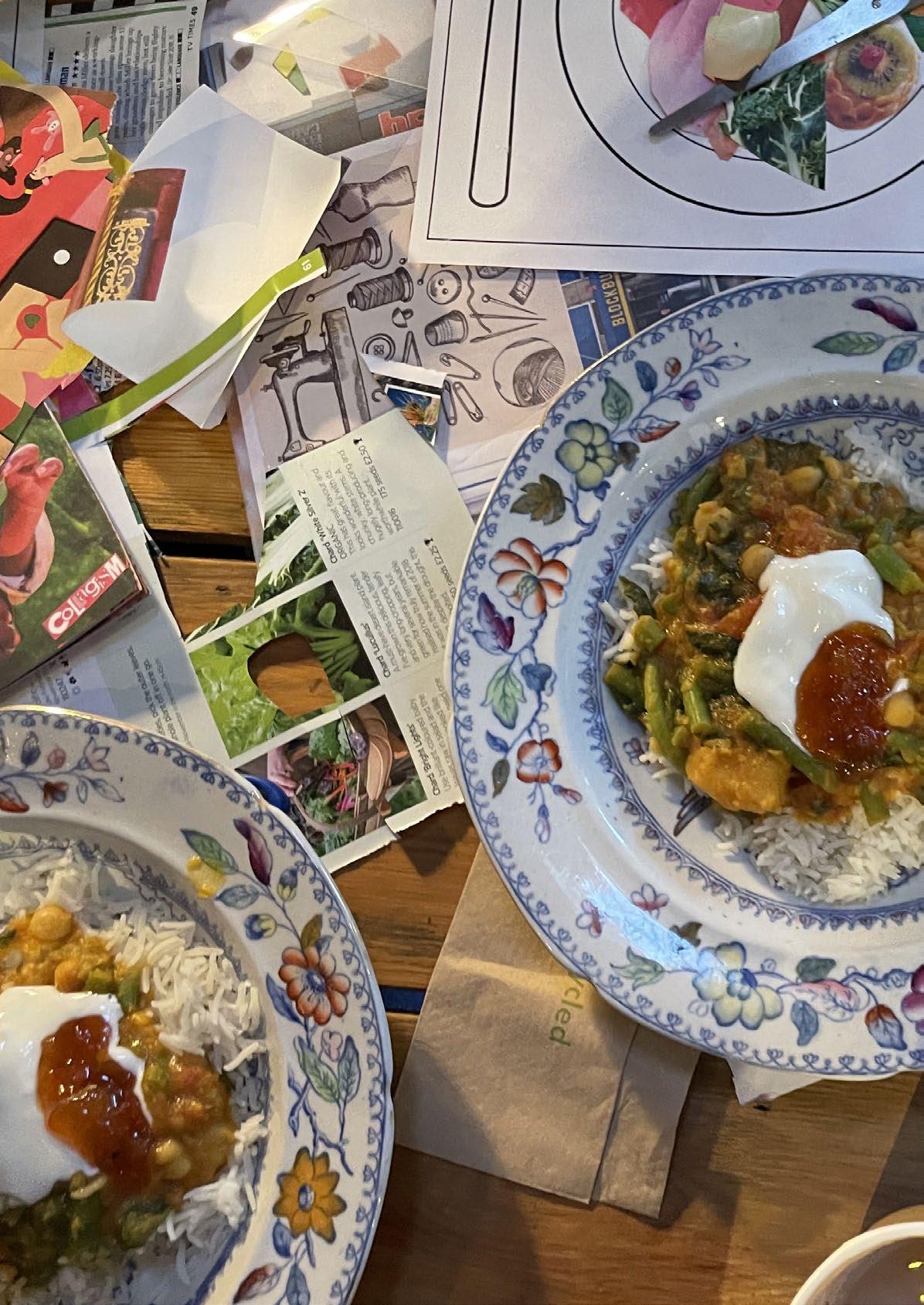
I am grateful for the food on my table
Saphia
I am a tracksuit doing workouts
I am busy and worn everywhere
I have connections in Devon and Brighton but have lived in Tooting my whole life.
I am me in baggy clothes
I am an ombre hoodie from pink to green making my owner feel less insecure
I am dressing gowns in the late evenings and morning
I am dresses on important occasions
I am Primark and Tesco
I’m good at creative things, teamwork and I’m nice
I’m grateful for my family, though sometimes we fight
- when life isn’t easy they’re the reason I survive
I am hopeful one day I’ll have my own business.
Grace
Fircroft Primary School You
I lived in Tooting for 5 years but have roots in India
I am me but I’m inspired by shop windows
I am my comfortable dress and leggings that make me feel free
I am worn at gyms, parties and the airport
I am Primark
I am thoughtful, energetic and creative.
I am grateful for life and family
I am hopeful for a great job as a doctor
Akila
A list poem is as it is described - a list of things. List poems don’t have to rhyme. They can be ordered to show details and thoughts about the writer. We’ve put this template together for you to make a list poem.
Describe yourself as you are today.
I am …
Describe Tooting and its relationship with clothes.
I am … Have you always lived here?
I have lived …
List any connections in other parts of the country/world?
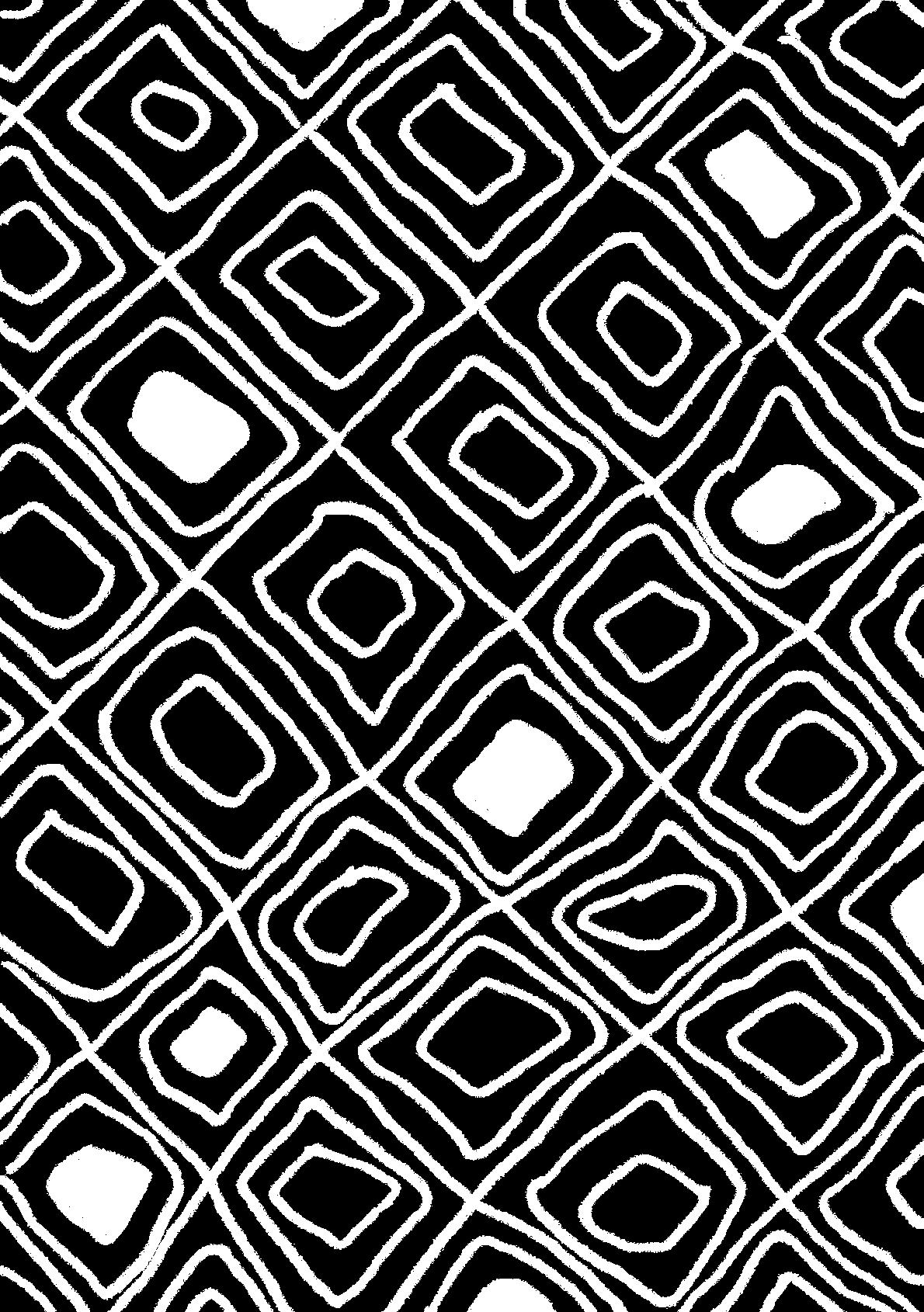
I am …
Describe a person who influences how you dress.
I am …
Describe your favourite clothes to wear and how they make you feel.
I am …
Describe your favourite outfit and where you wore it.
I am …
Describe any traditions around the way you dress.
I am …
Describe a favourite set of outfits for different occasions.
I am …
Describe where you like to buy your clothes.
I am …
Describe three things about you that make you proud.
I am …
Describe something that you are grateful for.
I am grateful for …
Describe something that you are hopeful for.
I am hopeful for …
You can draw or doodle what your answers look like around your poem. Read your poem to a partner. Discuss each other’s work. Can you identify your heritage?
20th century
1908
Harrington’s Pie & Mash on Selkirk Road first opens its doors. The Harrington family are still serving their famous pie, mash, and liquor to queuing punters to this day.

1916 1926 1930
Woolworths opened their 64th store in Tooting, opposite the Broadway.
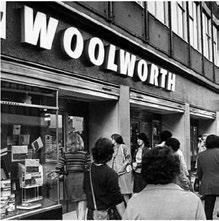
The arrival of the underground transforms Tooting from a village into a London suburb. Tooting Market opens.
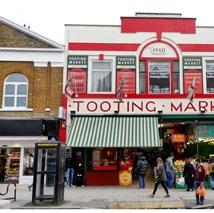
Granada Cinema closes due to declining audiences.
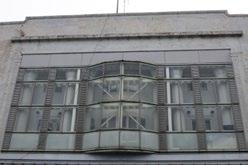
St. George’s, University of London (medical school) moved to Tooting.
Sree Krishna opened in 1973 and was the first South Indian restaurant to open in Tooting. The business permanently closed in 2020.
1980
St. George’s Hospital opened its doors in Tooting. Sherrys menswear opens.
Samrat opens and claims to be the longest-established curry house in Tooting, being family-run since 1980.
1987
1996
On the 15/16 October, there was a hurricane that hit the UK. It caused much damage to buildings, vehicles, and felled trees all over Tooting.
The circle foyer of the Mayfair (ABC) Cinema was converted into a Muslim cultural centre. Upper parts of the building converted into a Islamic school.
Granada reopens as Granada Bingo Club. 2008
Davies the pram shop opens.

1976
1968 1970s 1973
Marks & Spencer opens in Tooting – or M&S as we know it today.

M&S closes in Tooting with a plan to open a super store in Colliers Wood.

Sam’s 99p Shop opens on the site that used to house the Gordon Bennett public house. It had been converted into a retail space after suffering bomb damage in the war. It was originally the Broadway Palace Theatre.
2011 2012
Primark opens in Tooting on the site of the old M&S.
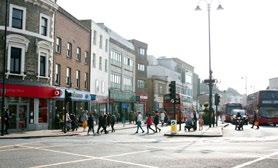
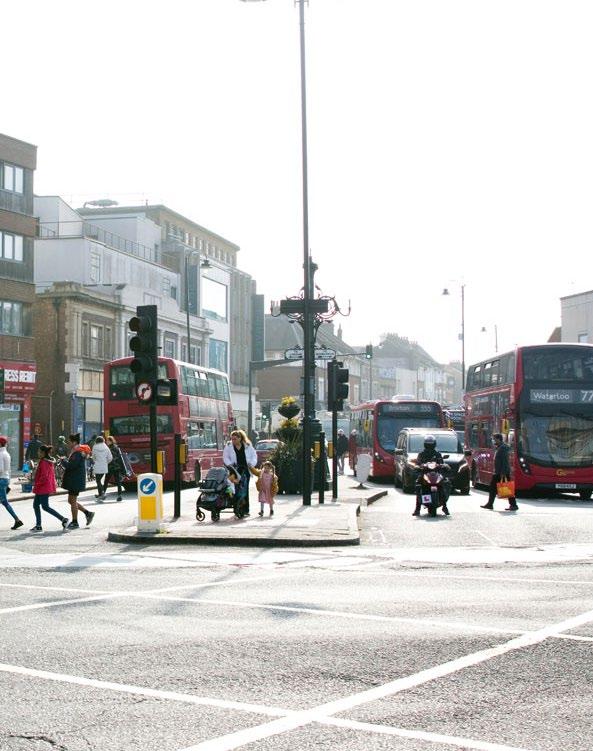
The Granada cinema opens.
The La Reine manufacturing company is established. They specialised in all types of hairdressing equipment including barber, hairdressing, optical, and dental chairs.
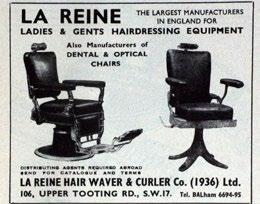
opens.
1931 1932 The Mayfair cinema opens and is renamed the ABC in 1933.
1936
1960
The Taborn family has four shops selling a variety of different goods in Tooting, with a flagship store at 66-68 Tooting High Street.

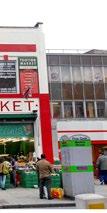
Chelsea Girl opens.
Morleys Stores take over Smith Bros in 1955. Over 60 years later, Morleys prides itself as Tooting’s largest Home Store.
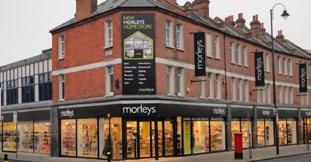
Tooting Broadway market opens.
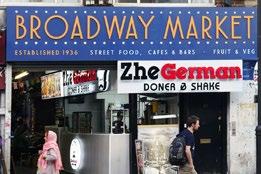
1936
1939 - 1945 World War II
JA Taylor Bakers opens. Many years later people will recognise it as one of the 800 sites belonging to Greggs.
1939
1946
1955
1952
Trams ceased operating in Tooting.
1950s
The Granada Cinema moves with the times and starts hosting music gigs, headlining acts such as Frank Sinatra, The Beach Boys, Little Richard, The Beatles, Roy Orbison, Jimi Hendrix, The Supremes, and The Rolling Stones.
There is an introduction of a 5p single use carrier bag charge in shops to try to combat the impact they are having on the environment. The government encourage retailers to donate the proceeds to charitable causes.
Savers and Iceland open on the redeveloped site that used to house The Astoria Cinema (formerly the Tooting Electric Pavilion).
2015
2017
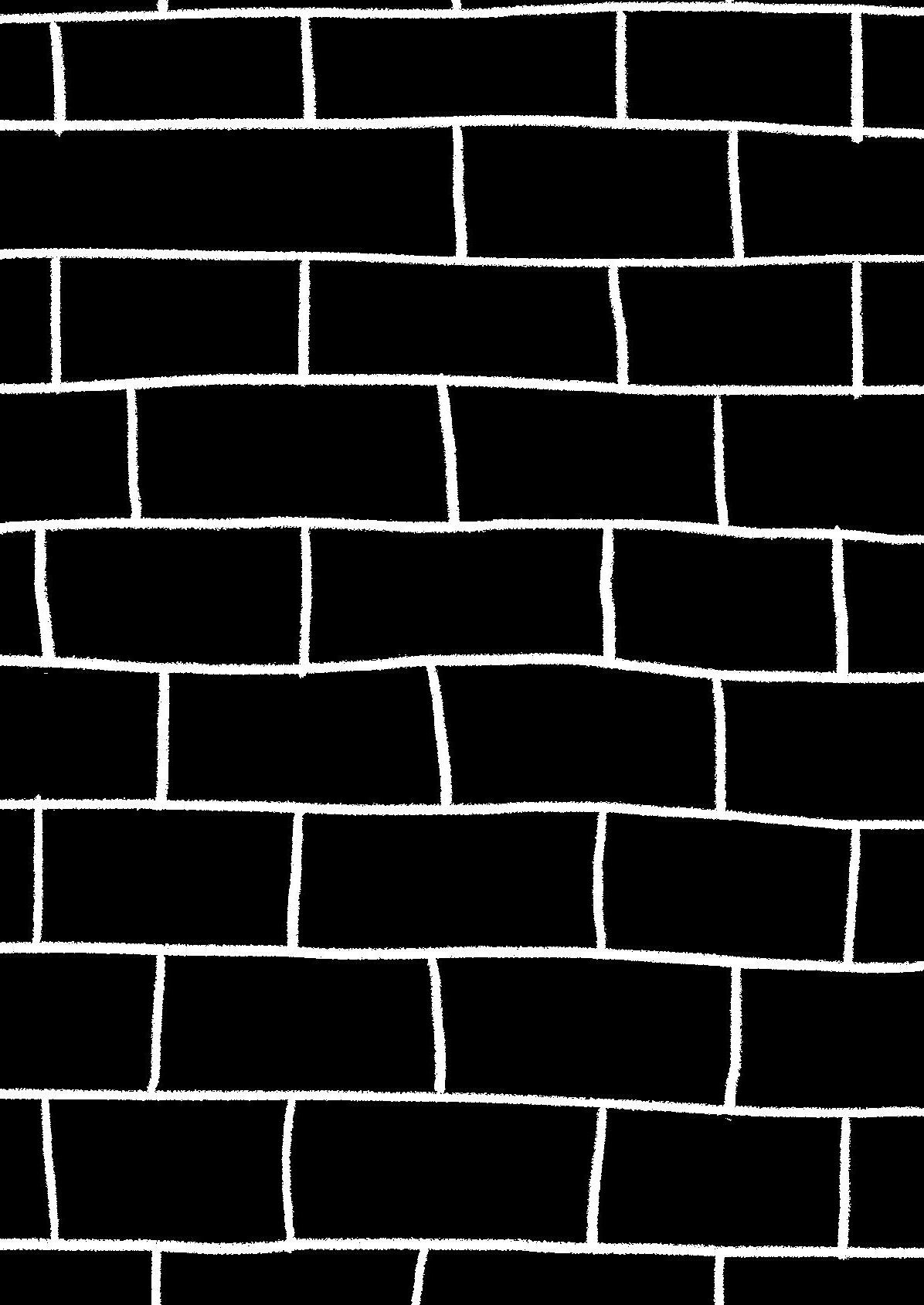
Have you ever walked down your High Street and wondered what the buildings would say if they could talk?
What we see as Sam’s 99p shop was something very different during WW2, however, Harrington’s Pie and Mash shop has sold pie and mash for over 100 years now. Using our story spine, imagine a building on our timeline could tell you a story. (Or pick another one you know better.)
Once upon a time
Until one day
Then Then
And every day after that Until finally
Here’s one from our project.
Once upon a time, my walls were filled with images and pictures of famous faces. People would rush in for a film. There was noise and laughter.
Until, one day something dropped down from the sky. I heard the noise before I felt the impact. It was a bomb, dropped because of the war. I felt myself crumble into different pieces and then to dust.
Then, there was silence. The films never came back. Then, one day, some people came and they built me back up. The walls changed, the people changed, and they decided to call me a shop.
Until finally I was open and able to sell many things. People came and they went. At the end of the day, when the lights go down, and every day after that, I wonder if the people of Tooting will remember my story?


One of the unique things about Tooting is the food. In Tooting Market alone, you can sit around a bench with friends, and each have a different plate of food from a different part of the world. In an age where big brands dominate the High Street, Tooting has a history of small, independent eateries, with places like Harrington’s Pie & Mash and Kennedy’s Fish & Chips becoming part of families’ histories across decades. Here we have a brief look at some of the memories from the 50s-80s.
“My local sweet shop was Hewitt’s in Seely Road, a typical old-fashioned sweet shop with a window display to make your mouth water (and my 6d pocket money never went very far).”
Derek Terrell“Does anyone remember Smith Brothers, did anyone sit in the invisible cash office?”
“Two ounces of sweets, rhubarb & custard, milk bottles, penny chews, sweet cigarettes.”
“Tins bought in corner shops opened with openers that often cut more than the desired object.”
“A shop called Birds, the owners like many, would live over the shop. They sold sweets and ice cream.”

“Penny drinks and a fizzy flavoured lozenge that you dropped into water.”
Meet Me at the Market Contributors
“My mum made tripe curry a few times. Man, that was enough to make you want to run away from home.”
Meet Me at the Market Contributor
“No one yet has mentioned the Crumpet Man. He used to wheel his cart through the streets. Sunday 4pm was crumpet time. I loved it with butter/jam or Marmite.”
“Try this one for tea one night: a piece of toast - brown or white, spread it with mustard or your favourite spread, add a slice of ham, beef, or anything you fancy, with melted cheese on top and a bit of black pepper.”
Meet Me at the Market Contributor
“The Wimpy bar was where we all used to hang out. Later on, in my later teens, when it very much became a case of you choosing to be either a Mod or a Rocker I tended to hang out at The Castle (pub). I was a Rocker. The Mods used the Wimpy bar.”
Danny Blue
“Harrington’s Pie & Mash – we loved it. My nan used to go there with tubs and get them to stack all the pies in one, fill another with mash, and have the liquor (parsley sauce) in another. She would bring it home and we’d all have the famous Harrington’s Pie & Mash. I still crave it now and have been practicing my own version. I’ve perfected the liquor now but I need to work on my pie making. My kids love it.”
Geoff
“Potatoes seemed to be the staple diet from what I can remember. And Spam. I didn’t care for it – didn’t like the taste of meat generally. So when I was 12, in 1964 I became a vegetarian. It was unusual at the time and my friends saw it as a novelty. My mum thought it was a phase but I’m still a vegetarian now and I’m fit and healthy. My mum died years ago but, when I used to go and visit her, she’d still ask if I was “still a vegetarian” after all these years!
“Eating out was tricky as a vegetarian back then. You weren’t offered much more than a cheese salad. Mum didn’t know what to make me so I’d say, “just cook what you normally do but leave the meat off for me”. One meal I remember was very strange – I was given a plate full of mashed potatoes with chips sticking out the top! I think that day I was off playing football all day. It can’t have been a great diet for that but I’ve done alright on it. It’s so much easier now.”
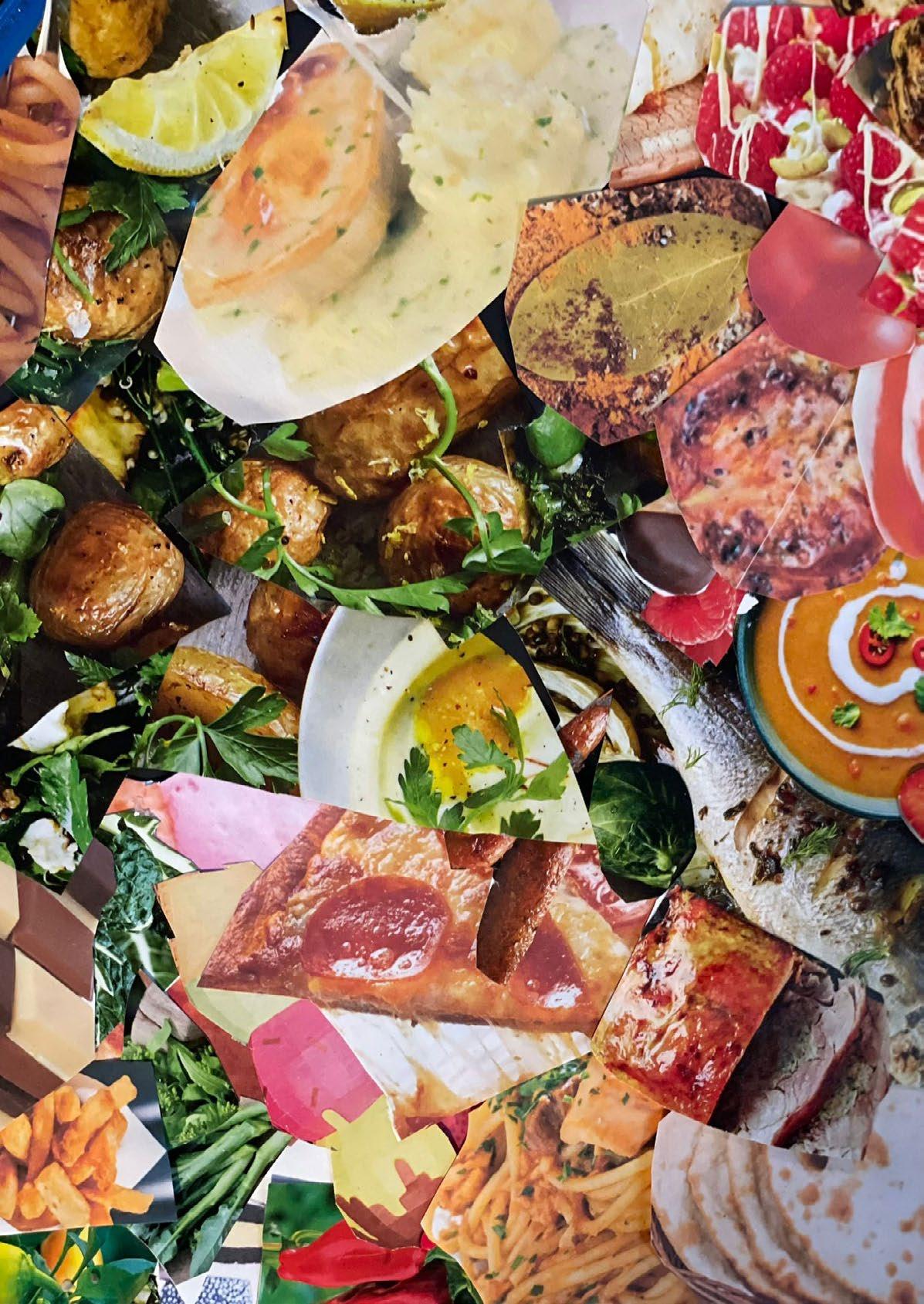 Roger Hunter
Roger Hunter
“Spud-u-like was a firm favourite in our teens. They were on the High Street in Tooting. I used to buy kebabs, or a jacket potato with cheese and beans. That kind of thing. Tooting High Street changed in the same sort of way and we would be walking down it to new smells of spices and see new things on offer that we had never seen before. We had no judgments or prejudices about it, it was just all new.”
“Sree Krishna was such a busy restaurant in the ‘80s. If they didn’t have a table they would get you to go to The Tooting Tavern (then run by the Mulholland family) and come and get you when a table was ready for you.”
Meet Me at the Market Contributor
“When they first opened they didn’t have a license so the waiters used to walk over the Tavern with a tray to get them!”
Meet Me at the Market Contributor
You can see the whole world in Tooting.”
Build a word bank about food in Tooting. Everyone shares one (or more) word(s) that they associate with food at home, school, or in their community. This will form your Word Bank.
Here’s a word bank for Tooting Market. smells delicious / fruity / steamy / busy / warm / cold / spicy / sweet / noisy / chatter / colourful / clatter / windy
Now, connect to your senses.
Imagine you are sitting to eat at Tooting Market (or your favourite place). Think about your meal and whilst you are eating, quickly list:
Anything you heard. Anything you smelt. Anything you touched. Anything you tasted. Anything you saw.
Use this list to create a sensory poem.
Here are some examples written by children at Smallwood School:
Tooting Market is a magical, diverse place, It smells like fresh noodles
The market sounds like fish splashing in the water
It feels like a soft rug shop And it tastes like juicy chicken.
It tastes like ramen Smells like sweet and sour chicken It feels like comfort
The market looks like a busy house And sounds like chatty children


As far as I know my grandparents on my father’s side were born in Tottenham originally. They moved from Barnet, and then when my dad was two, for some reason they moved from Barnet across London to Tooting and took the shop on in 1922. My nan and granddad ran it until they retired to Peacehaven, my aunt (dad’s eldest sister) took it on after that. Aunty Maud was there until my granddad passed away and she went to live in Peacehaven to look after my nan. That was when my dad took over the shop in 1963 so it has been in the family for 50 years, it was 67 Selkirk Road opposite the pub.

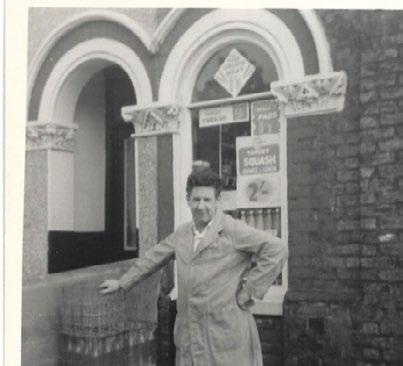

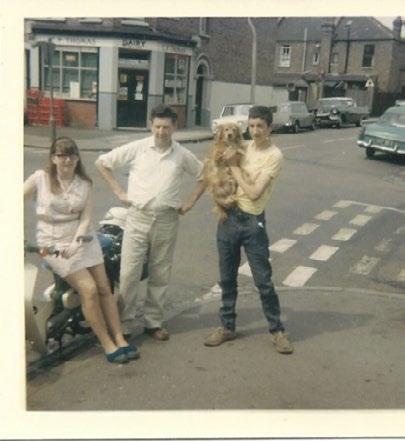
It was a general store, just selling bread, butter, packet foods like tea and biscuits, tin foods as well as cigarettes that type of thing. We had a big fridge to keep the bacon in because we used to have big sides of bacon delivered. You have smoked and green bacon, we had to get all the bones out of the bacon, the term green is used just to say unsmoked. You had a whole side of a pig and all the rib bones had to be taken out, I was only 11 and my dad taught me how to do it. I’d have a little boning knife to get the ribs out and the hock bone out. He used to cook his own ham in a big saucepan, ruined my mum’s cooker.
Eventually it went on to buying it already done but that was a lot later. We had a bacon slicing machine. I used to clean it, it frightens me to death when I think about it now, on a Friday night I used to hold a knife against the blade and turn the handle, and when I think about it - what could have happened.
I was working there evenings and weekends from the age of 16 after I finished my full-time job, I would get home and dad would say “Give us a hand in the shop”. There were no adding up tills in those days,
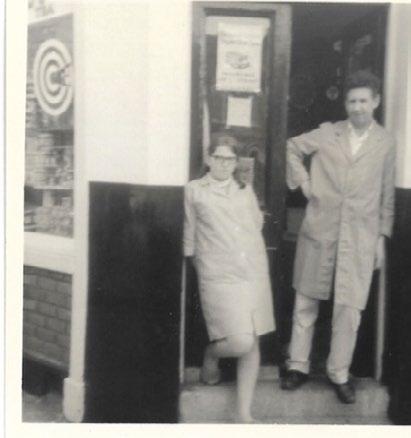
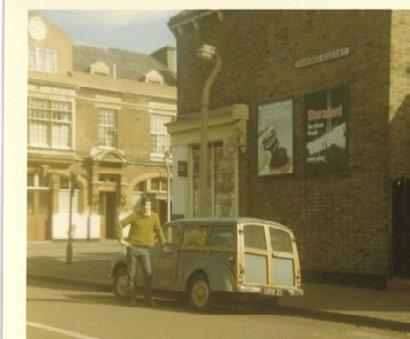
we had pounds, shillings, and pence - not decimal. You had to know 12 pennies to a shilling, 20 shillings to a pound, you had a long shopping list and that had to be added up in your head, not easy. My dad paid me with treats like a new outfit, no wages as such.
My dad was open 365 days a year, never closed, the only time my mum had to run the shop was when my dad was ill, for him not to work he must have been bad. Christmas morning we were open but in the afternoon some customers would still knock on our side door if they forgot milk or bread. We were open weekdays from 8am to 7pm with an hour closed for lunch, 9am to 1pm on Sundays my dad loved it, it was difficult living in the shop because even when closed customers still knocked for forgotten items, also as our living room door opened onto the shop people could see into our living room if dad didn’t shut the door. We had two chairs in the shop, customers would come in to do their shopping and be there an hour chatting telling my dad to serve other customers as they were happy sitting there waiting. I can still see in my mind my dad standing there with his arms folded chatting away.
It was W H Jennett originally (my granddad’s name) when my dad took over it changed to W J Jennett. We sold the shop in 1972, my dad went back to work on the school service as an assistant caretaker, he did that until he reached 65 when he had to retire as in those days you couldn’t carry on past retirement age.
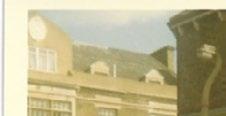
The shop is living accommodation now, all the shops in that area are gone. There was a dairy, my dad’s shop, and a paper shop. We knew the Thomas family in the dairy, we used to help each other out if we ran out we could borrow from them or vice versa. We sold a lot of the same stuff in both shops. We did not know the family in the sweet shop by name.

Read the memories of what it was like to have a corner shop. Or, ask someone to read it to you.
Afterwards, draw what you remember from the recollection. (These can be doodles and sketches.)
For instance, what do you think green bacon looked like? What does a bacon slicing machine look like? What do pounds and shillings look like? What did dad look like? What did Christmas look like?
Can you turn your ideas into a comic strip?

Can you add dialogue to your drawings?
What might Jill say whilst she’s chopping up bacon?
What does Dad like to talk about to his customers?
What chatter would take place when a customer is buying something in pounds and shillings?
1. My parents moved to Moffat Road when I was 6 weeks old in 1946. My father worked as a fishmonger for Fred Romaine in Tooting market and up until I started school my mother used to clean for Mr and Mrs Jones who had a grocery shop on Tooting Bec Road opposite the side of St Anselms.


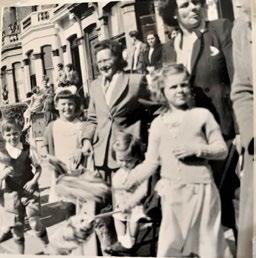

On occasions we had a cup of tea in J. Lyons’ café just before the Broadway. We used to shop for green grocery at a stall on the corner of Kellino Street and Upper Tooting Road. The corner shop was Mrs Payne’s off licence then there was Barker’s Chemist with Dr Kerr’s surgery above. Then there was Beale’s butchers, a bit further on Miller’s bakers and on the corner of Totterdown Street there was David Grieg – one of the early supermarketstyle shops. My mum used all these as well as the market.
at the back as a storeroom, and to wait when there were no customers.
Dad was born in 1917 and so I think the photo is 1930/31. The 1939 Register shows Henry and Maud as ‘shopkeeper and general grocer’. Henry and Maud had two other sons who also helped out in the shop until they left home.

Photo courtesy of Chris Graves
They say that you can take the boy out of a place, but my heart will forever live on the common in Tooting.
Photo courtesy of Mick, USA.
viewable from inside while ascending, after the polished panelled doors were closed following embarkation. The Co-op store was indeed the classiest in Tooting in those days.
Photo courtesy of Janet Sherman
3. Henry Herbert and Maud Bell ran a shop in Garratt Lane from the late 1920s through to the late 1950s. Grandad was born in 1877 in Gillingham, Dorset, and died in 1949 in Tooting. Grandma gave up the shop a couple of years later.

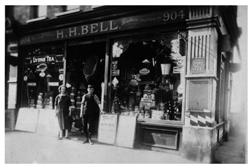
I remember the shop well. It sold most things and was a newsagent. It was dark inside and they used a room

5. Now 50 years on, of course some things, like the exact location of all the roads etc, has faded slightly. But the names and memories are vivid.
In the summer we “lived” over at the Lido. My mum worked in the “canteens’’ at the Running Track, the Lido, and the Tea Room off Elmbourne Road. Even now, I can still recall the aromas of places like the Lido and Tooting Market.
The funfair that showed up every year was a real treat, especially the “Whip”. A favourite treat was a 99 from the ice cream lady, who could be found on the avenue by the drinking fountain.
In the ‘50s and ‘60s, with a fridge the size of a postage stamp, mum went shopping every other day, and we boys would be in the Market a lot over the weekends and so on. I can still remember staring at the window of Dolci’s, the shoe shop, not able to afford all the cool shoes I could see.
I also remember the aroma of the public loo at the Broadway…
I have a den here in Delaware that pays homage to everything Tooting.
7. I certainly remember the sweetshop and “borrowing” a ration book to go and buy sweets - still got the ration book if of any interest.

9. Here I am dressed up as Robin Hood. I think I was about five years old, so 1955. The photo was taken in the rear grounds of Sutton Courtenay House, Hazelhurst Road, opposite Smallwood School.
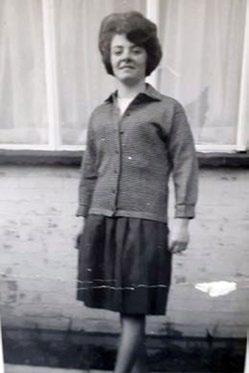
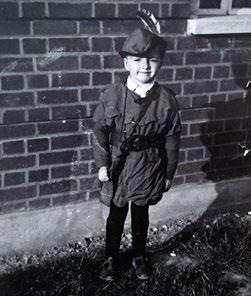
Photo
8. A visit to the Co-op in the ‘50s, was made more exciting when taking the lift to the upper floors. The lift operator dressed smartly in traditional doorman’s attire. Remembering as a child being fascinated by the mechanism
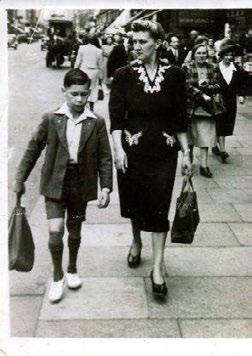
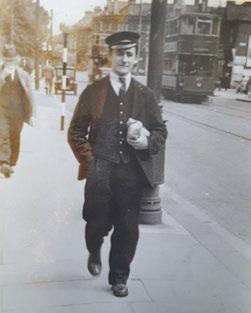
11.
12. 1960ish…a little Martin Ford number in bottle green...what was I thinking!?
Photo courtesy of Dorene Willis
Photo courtesy of Pam Goodyer (née: Black). 2. Uncle Reg walking home along Mitcham Road, near Amen Corner, from work as a station porter at Tooting Junction Station. I’m not sure of the date. Photo courtesy of Ron Newman 4. Photo of Mum and I, about 1950, with a milk cart in background. Tooting High Street. Photo courtesy of Ronald Stanley 6. Coronation Tour photo Tooting Waving flags for the Queen’s Coronation Tour in June 1953. Photo courtesy of Lynda Cazeaux Photographed with permission from Sylvie courtesy of Ron Newman 10. Tooting Broadway, 1960 Photo courtesy of Maria Rey Tooting Broadway, 1960s Steve Gagen13. I was born in Gassiot Road. Moved to Himley Road when my brother was born. I went to Sellincourt School. And the Girls Brigade near the Mitre. My grandad was a butcher in the indoor market. I loved my life in Tooting.
My grandad would have worked in the market during the late fifties and the sixties. He loved working there. I was always made a fuss of by the other stall holders when my nan took me there to see grandad.
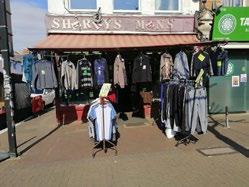
This one is of the name tag I had to wear when I started at Sellincourt infants

18. Mum would get me to run errands, I would earn sixpence if I ran to the Broadway and back for her. I also had a paper round and I would spend the money on jamboree bags and in the Summer a Jubbly.
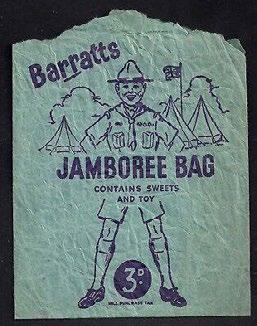
I left school at 15. Before I left, I had a job in the greengrocers closest to my school from the age of 14. I worked in there almost every day. The teachers used to come and buy their apples off me in the morning and when an inspector visited the school, they’d grab me and put me back into the classroom!
My best friend at school was Jamaican. I would go round nearly every day to eat dinner with him. His mother cooked the most amazing food, fried bananas and beans.
This was taken during the hot Summer of 1976 when I was seven. I’m in the red costume sitting on the fence outside our house. My two sisters and brother are also there. So many fantastic memories of playing safely in the streets with our friends till it started to get dark.
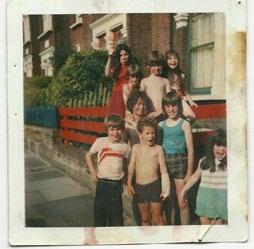
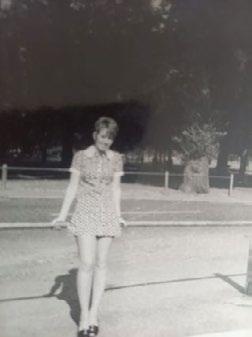
14. The 27th London Boys Brigade in civvies, outside the Tooting Slipper Baths, on the corner of Tooting High Street and Garratt Terrace, c.1965, before travelling to Oxshott, Surrey for an adventure day.

15. A photo of my wedding day groom and best man, both wearing suits from Kretts 1968. The groom’s suit was £30!

17. This was 1969, bought in Tooting. Not sure whether it was Chelsea Girl though it could have been, or Martin Ford’s. This was at my brother’s wedding in Caxton Hall.

19. They were very strict in St George’s but they taught us well. We wore paper hats until we qualified and then we wore starched hats which we had to make up ourselves. It was a nightmare putting them together. We used to pay a penny for someone else to make it up for us sometimes. We wore black shoes and tights. The part of the uniform I loved was the woollen cape which was navy blue outside and bright red inside with cross bands which looked like red cross when done up.
We were allowed to eat on the ward once the patients were fed and we had a staff canteen. We used to eat a lot because we were on our feet all day.
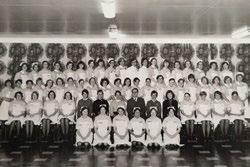
We used to go to the Sree Krishna Curry House in the High Street. That was my first curry.
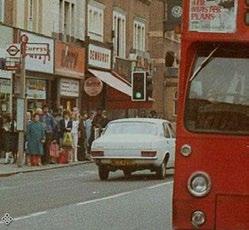
Photo courtesy of Margaret Zwirek
21. Not a very good picture, but upstairs in The Selkirk, 1987. My Mum’s 60th Birthday.

John Seaden
22 - 23. I remember Saturdays on Mitcham Road, Sherry’s (which is still there) and of course the iconic Chelsea Girl. I remember buying fabric from the market and making an apron and petticoat in needlework at school.
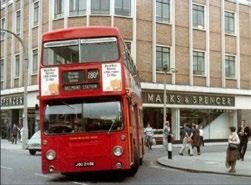
 Photo courtesy of Debbie Bond
Photo courtesy of Ron Newman
Photo Courtesy of Jean Grice
16. This picture was taken on Tooting Bec common in 1969 I was 16 and the dress was bought from Chelsea Girl. Photo courtesy of Helen Gentry
Photo courtesy of DeeDee Hildreth
20. Tooting, 1978 Photo courtesy of Colin Pickett
Photos courtesy of Debs Morgan
Alan Pearce
Patricia Worrall
Photo courtesy of Debbie Bond
Photo courtesy of Ron Newman
Photo Courtesy of Jean Grice
16. This picture was taken on Tooting Bec common in 1969 I was 16 and the dress was bought from Chelsea Girl. Photo courtesy of Helen Gentry
Photo courtesy of DeeDee Hildreth
20. Tooting, 1978 Photo courtesy of Colin Pickett
Photos courtesy of Debs Morgan
Alan Pearce
Patricia Worrall
We are going to use letter writing to tell stories inspired by memories.
A letter template:
Writing a letter is simple. Here are the things that every letter needs:
Date: The date goes at the top of your letter so that the person you’re writing to knows when you wrote it.
Greeting: In the greeting we write ‘Dear’ and then the name of the person we’re writing to and then a comma. If you know the person well then you might call them by their first name, if you don’t know them then you might use their title, for example ‘Mrs Woods’.
Body: The body of the letter is where you communicate your thoughts, ideas, and questions for the other person.
Closing: Your closing sentence shows that the letter is going to end. If you know the person you’re writing to well then you could finish the letter with ‘love’ or ‘your friend’. If you don’t know the person well then you could use ‘best wishes’ or ‘yours sincerely’.
Signature: Finish the letter with your name or signature.
Here’s a template to show where everything needs to go!
Date, for example: Monday 27th April 2020
Greeting, for example: Dear Mr Postman,

Body, for example:
I hope you’re well and you’ve been enjoying the sunny weather we’ve been having over the last few weeks. What do you do when it rains? I wanted to write to you to say thank you very much for delivering our post. You have brought us lots of letters and parcels that have really cheered us up, particularly on our birthdays.
Are you ever tempted to read the postcards you deliver? I bet you know some funny stories!
I hope that when it’s your birthday you get sent some lovely things in the post too.
Closing, for example: Best wishes, Signature Sharon
Now that you’ve seen what your letter needs to include, write to someone who you know well. This could be:
A friend
A grandparent Your teacher
When we write to someone we know well then we can use an informal tone, which means we can be more friendly and chatty and even use words and phrases as if we were talking to that person face to face.
Think about how your letter can spread some kindness and cheer someone else up! It can be about whatever you like, here are some ideas in case you need them:
Write about something you’re proud of that you did over the last week.
Write about something pretty or interesting you’ve seen on your daily walk.
Write about a memory you’ve shared with the person you’re writing to.
Write a thank you letter to someone you don’t know:
Now write a thank you letter to someone you don’t know well. This could be:
- Someone working in the NHS like a doctor or nurse
- Your postal worker
- A supermarket worker
- A delivery driver
- A bus driver
- A refuse collector
Remember that when we write to someone who we don’t know well we use a formal tone. This is a more polite way of writing to someone.
Can you draw a picture at the end of your letter too?
Write a story through a letter!
Take a look at our Tooting memories. Can you write a letter inspired by one of the photographs or memories?
Here are some questions to help you!
• Who is your main character?
• Who are they writing to?
• What year do you think they were writing their letter in?
• How old are they?
• What events happened before or after their photograph was taken?
• What clues can you find in the photos about what they might feel?
• What do they want the other character to feel? For example, are they thanking them for something?
Or asking for something?
Or complaining about something?
For example, here is a letter inspired by Ron Newman
• Main Character: Ron
• Writing to: Doreen (his cousin or friend from childhood)
• The year: 2000
• Telling the story of: Remembering when they had a day of being Robin Hood
• He wants to remember how much freedom they had as kids.
I hope you are keeping well. I can’t believe it’s been over a year since we last saw each other. How time flies!
I was clearing out the attic the other week & I stumbled on a box of old photos which made me think of you.
Do you remember when we were kids and used to dress up and play on Hazelhurst Road? I was Robin Hood, and you were Maid Marian. We used to run up and down the roads to dodge Tommy Smith who always was stuck playing the Sheriff. Oh, what fun we had.
I never thought to appreciate the freedoms we had as children. Such special times. Remember when they stopped rationing sweets, and we’d rush up the shop for a bag of foam shrimps. Saturdays at the film club. Magical times.
Anyway, Doreen I just wondered if we might find a date to meet up – perhaps in Tooting? We could take an afternoon to step back in time – have a walk down memory lane and perhaps finish it off with pie and mash in Harringtons.

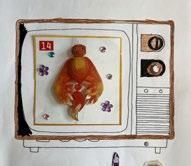
“Communications were so different... Well, I had pen friends. You’d find them advertised in comics etc. “pen friend wanted” so I used to write to various girls in Liverpool, Reading, Gloucester, and one in Greece. I’ve still got their replies and I sometimes wonder what happened to them. Of course, you can’t read what I wrote to them –that would be interesting to read again but once a letter is sent, it’s gone of course.”
Oral History Interview
“Before we got our washing machine we went to the washers - it was such hard work there. I was only a child so my brother and I used to play but once we were finished I’d sometimes help Mum put the sheets through the press. There were big, long tall rails that you used to pull out to hang your clothes on then push them back in to dry. When we got our first washing machine it was amazing - I was 12. It was a HUGE round thing with a big agitator in the middle of it.”
Tapestry Club Participant
“I did collect records myself. I’m a huge Beatles fan and have lots of memorabilia. My greatest regret is not being able to see The Beatles when they played The Granada. I was desperate to see them, but the tickets were 7 and 6 each and my mum just couldn’t afford it. I do regret that. I would have loved to have seen them. I remember they stayed in Trevellian Road when they played there.”
“I had a bright red cassette player and a black Walkman with those cool headphones!


I used to record Top 40 on radio one every Sunday 4-7, I remember having to press stop really quickly because I wouldn’t want the DJs talking on it, and I remember making mix tapes for friends’ birthdays.”
Tapestry Club Participant
“I got into the habit of loaning tapes from the library to copy them!”
Tapestry Club Participant
“My first TV remote only had two buttons! I remember when the picture went off having to wallop the thing to get it working again. And twisting the aerial.”
Tapestry Club Participant
“Sammy Beazey who also lived in Selkirk Road was a rarity in that he had a television, he left his front door open so everyone else could watch it too.”
Meet Me at the Market Participant
“I remember my first colour TV it was a huge thing in the middle of the room, it had a tiny screen and I remember my neighbours coming round to watch it.”

Tapestry Club Participant
“We didn’t have a telephone until 1974 we had to rely on red telephone boxes to make calls. And to arrange to have friends at their local phone boxes at a pre-arranged time and hope someone else was not in there before them.”
Keith
“I remember MTV starting and you could see your favourite artist without having to go and look them up, it was amazing, it was seeing them in person. Some of the videos were so weird.”
Tapestry Club Participant
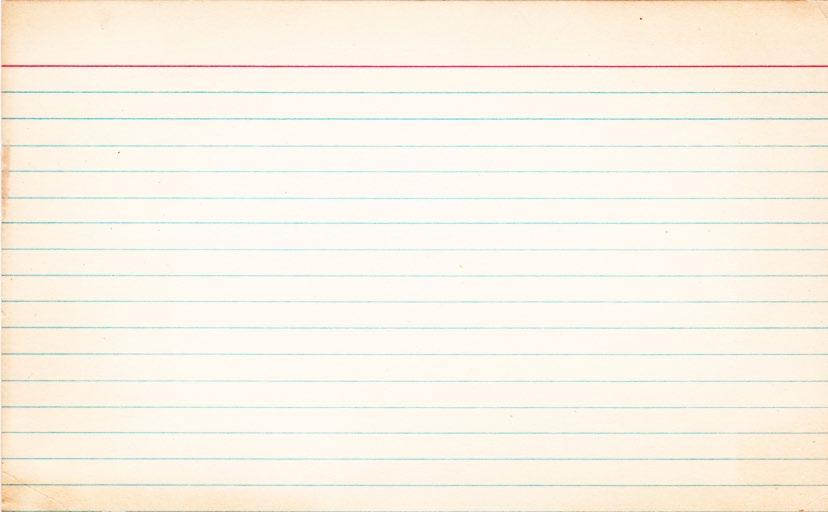
A diary entry can be a great way to tell a story and show your reader what your character is doing and thinking!
A diary is a book where people can keep a record of their daily experiences and feelings too! They write down what they’ve been up to and how their activities have made them feel, whether happy, sad, or anywhere in between.
Let’s pick a memory from the Washing Machines to Wi-fi page, for example, the first colour TV. Now imagine you are someone on the street peering in and looking at the colour TV. Decide what your character is like. Are they:
Friendly Lazy Angry Silly Shy A show off
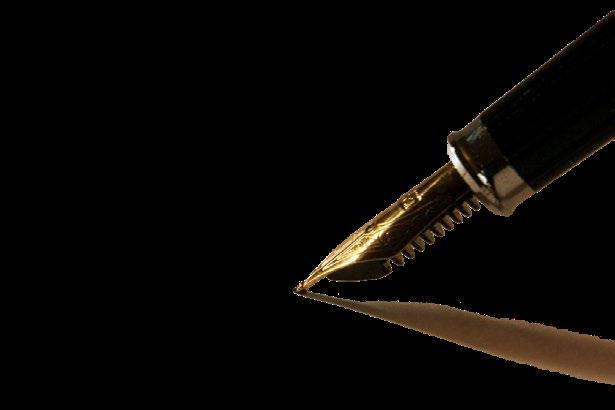
Here’s one of ours!
• What is their name?
• How old are they?
• Where do they live?
• What friends or family do they have?
• What is their favourite thing to do?
• How do they feel about seeing a TV?
Plan five things that happened to them.
How did their day start off?
What were they planning to do that day?
What happened in the middle of their day?
How did the day become a bit more dramatic?
What happened at the end?
Here’s one of ours!
Today was going to be like any other day in the world of me Doris Smith, age 10.
Lydia, Em and I had all planned to play out like normal. Then, there was this noise coming out the Beazey’s house. It sounded like an explosion and there were voices we didn’t know coming out the hallway.
We rush across. They’d left the door open. Everyone on the road started to walk towards it. It was like time stood still. I was preparing myself for the worst. I closed my eyes just as we arrived at the front gate. I breathed in and as I opened them I saw… They’d only gone and bought a television! An actual television. Like having the cinema in your house. I was transfixed. Imagine being able to beam into houses all around the country. Isn’t that magic? I wanted to step inside that screen and be part of the magic. In that moment diary, I knew I wanted to be a news reporter too.
For now, I must go to sleep and dream. Yours truly, Doris

